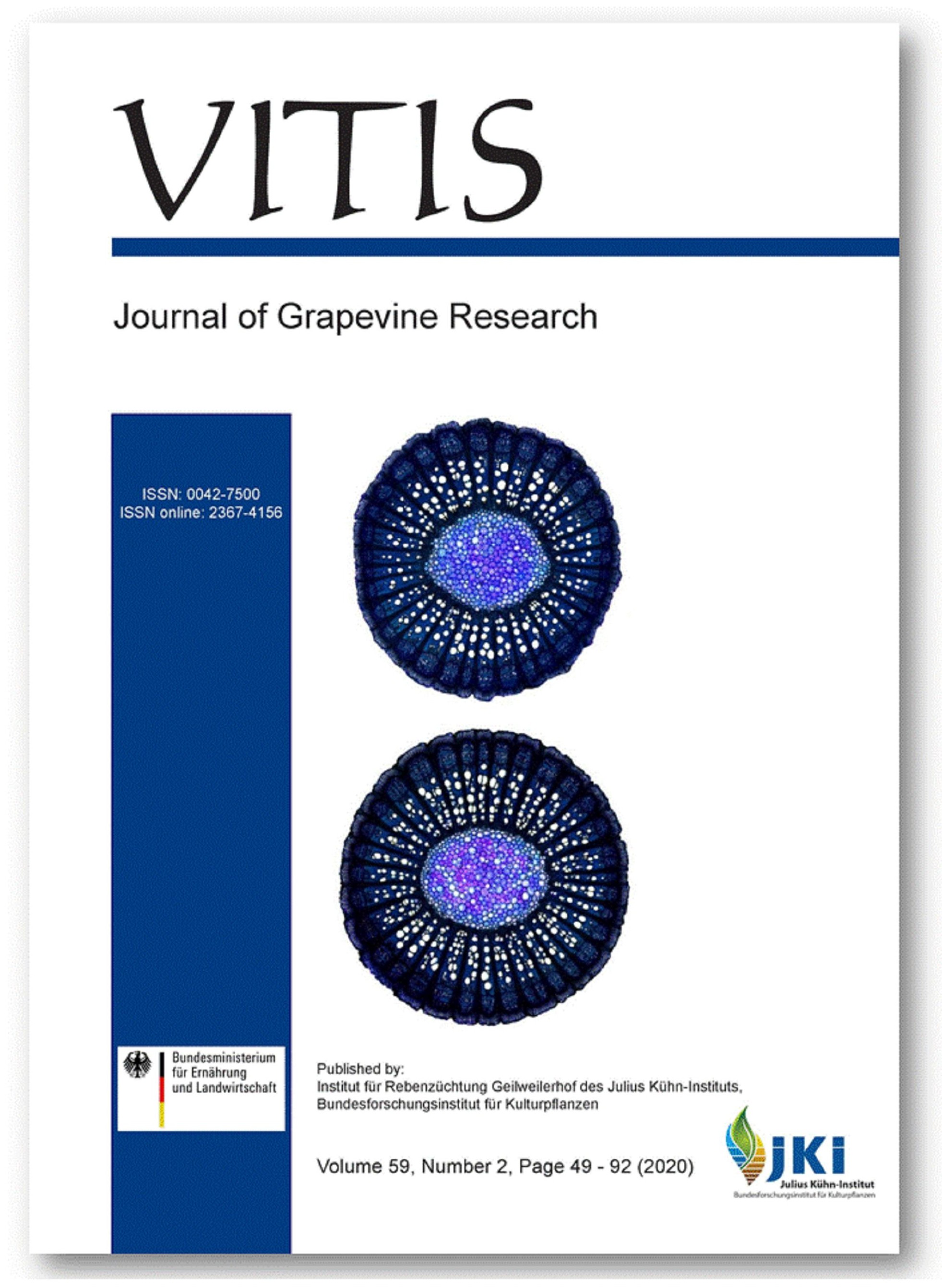Grapevine trunk disease in German viticulture IV. Spreading of spores of the Esca related fungus Phaeomoniella chlamydospora and the occurrence of foliar Esca-symptoms in German vineyards
DOI:
https://doi.org/10.5073/vitis.2020.59.63-69Keywords:
grapevine trunk diseases; nested-PCR; Phaeomoniella chlamydospora; spore traps; viticulture.Abstract
The anamorphic fungus Phaeomoniella chlamydospora (Pch), related to Grapevine trunk diseases (GTDs) such as "Petri disease" and Esca, was originally restricted to the Mediterranean area but can now be found worldwide. GTDs are the most destructive diseases in vineyards causing high losses every year. As there are no effective fungicides available it is important to understand the epidemiology of this fungus. To investigate the occurrence and distribution of Pch in the field, spore traps were placed in two selected vineyards located at the Julius Kühn-Institut (JKI) in Siebeldingen, Germany, for three consecutive years. Plots were planted with cultivars 'Chardonnay' and the fungus resistant cultivar 'Phoenix'. Analysis of the traps was performed by a specifically developed nested-PCR approach. As a result it was proven that Pch is present in the vineyards throughout the whole year, including wintertime. The occurrence of Pch conidia during the winter months is a central issue as the annual pruning of vines is done in the winter season and pruning wounds are supposed to be the main entry point for this pathogen. During the three year survey also symptom appearance, both chronic and apoplectic, on leaves as well as weather conditions have been recorded. Symptoms were evident in both vineyards; however, no clear correlation was obtained between symptoms and spore flight. High temperatures combined with low humidity may have a negative impact on spore dispersal, while cold temperatures such as in wintertime have no negative effect on the appearance of spores.
Downloads
Published
Issue
Section
License
The content of VITIS is published under a Creative Commons Attribution 4.0 license. Any user is free to share and adapt (remix, transform, build upon) the content as long as the original publication is attributed (authors, title, year, journal, issue, pages) and any changes to the original are clearly labeled. We do not prohibit or charge a fee for reuse of published content. The use of general descriptive names, trade names, trademarks, and so forth in any publication herein, even if not specifically indicated, does not imply that these names are not protected by the relevant laws and regulations. The submitting author agrees to these terms on behalf of all co-authors when submitting a manuscript. Please be aware that this license cannot be revoked. All authors retain the copyright on their work and are able to enter into separate, additional contractual arrangements.



